Global high-mix volume high-speed Shenzhen PCBA manufacturer

Ru
9:00 -18:00, Mon. - Fri. (GMT+8)
9:00 -12:00, Sat. (GMT+8)
(Except Chinese public holidays)





Global high-mix volume high-speed Shenzhen PCBA manufacturer

Ru
9:00 -18:00, Mon. - Fri. (GMT+8)
9:00 -12:00, Sat. (GMT+8)
(Except Chinese public holidays)





HomePage > Blog > Knowledge Base > PCB Glue | Definition, Types, Applications and Practices
In electronics manufacturing, PCB glue provides solid support and electrical insulation. It is an indispensable material. Whether it is for prototyping or mass production, choosing the right electronic glue can improve product quality and stability.
In this article, let’s learn about common types of PCB glue, their uses, how to use them, and how to remove them safely.
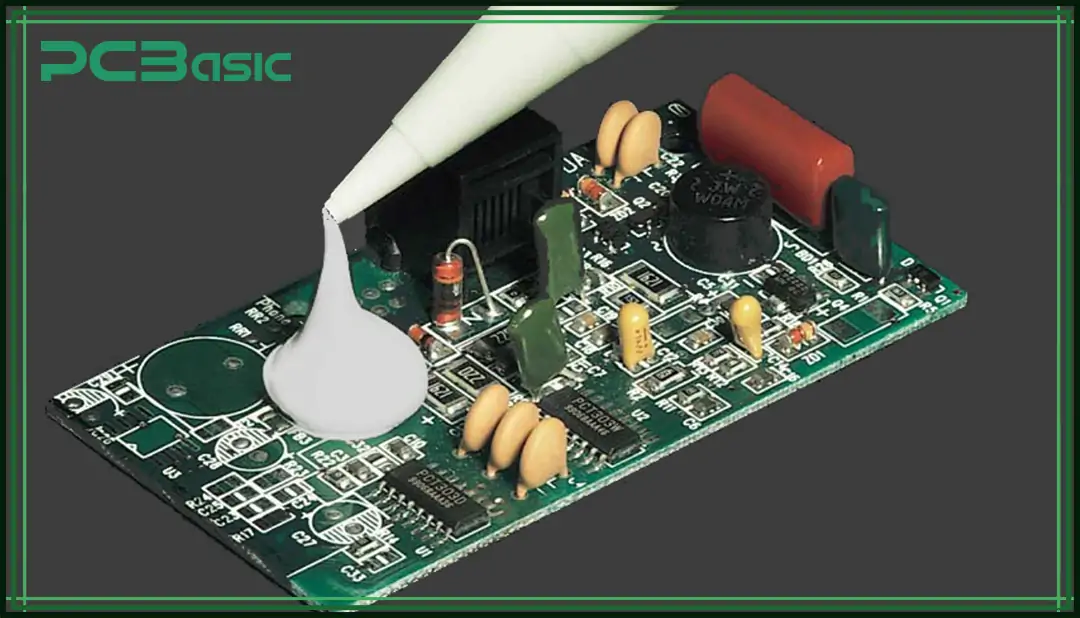
PCB glue, also known as circuit board glue, is a special PCB adhesive. It can firmly stick electronic components to the circuit board, prevent vibration damage, but enhance the overall mechanical strength. Unlike ordinary glue, glue for circuit boards is non-conductive, resistant to high temperatures, and does not harm electronic components, making it ideal for use on circuit boards.
Using PCB glue can bring many advantages, so it is often used in the circuit board production and assembly process.
• Mechanical stability:
During PCB soldering or equipment operation, electronic components may shift due to vibration, handling or r temperature change. Therefore, electronic glue can firmly fix the components on the circuit board to prevent loosening or misaligning, ensuring the normal operation of the circuit board.
• Thermal management:
Some PCB adhesives have good thermal conductivity, which can help conduct the heat generated by electronic components. This can avoid local overheating, extending the service life of the device and improving overall stability.
• Protection from vibration:
In high-vibration environments such as automotive and industrial equipment, solder joints on the circuit board are easily damaged by repeated stresses. Circuit board glue can play a cushioning role, dispersing stress and protecting solder joints.
• Electrical insulation:
High-quality electronic glue usually has good insulation properties, which can effectively isolate adjacent components or bare conductors, preventing equipment failure or even safety accidents caused by short circuits.
In short, the correct use of circuit board glue can not only enhance the reliability and safety of the product, but also improve the service life and overall performance of the whole machine, especially in the application scenario with high stability requirements.
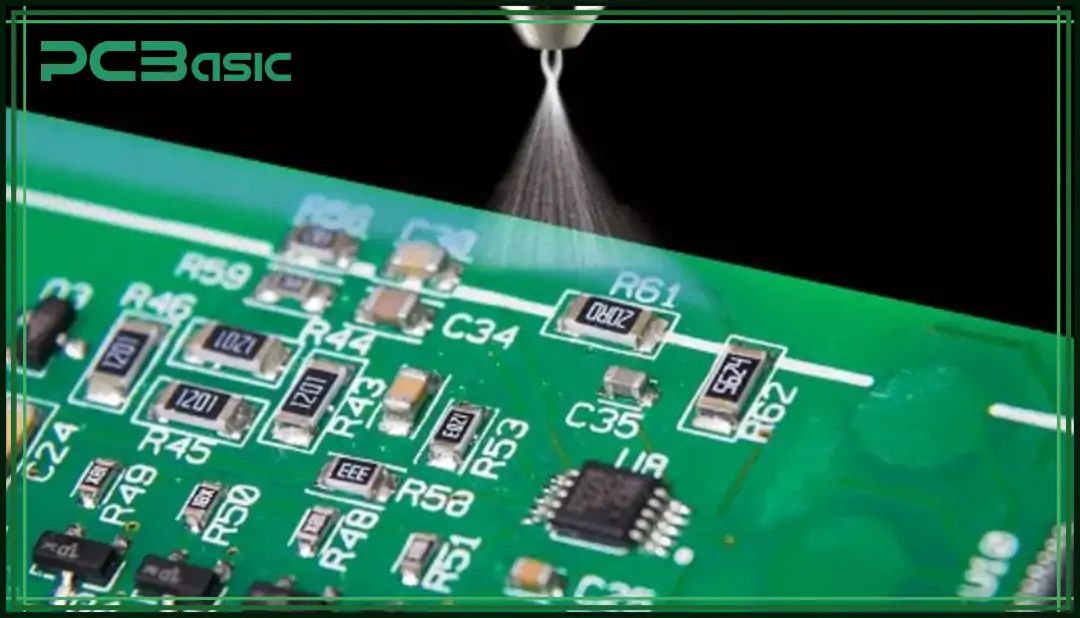
There are many types of common electronic glue, and different glue is suitable for different application scenarios and performance requirements. Let's learn about the features and application scenarios of common PCB glue.
|
Glue Type |
Key Features |
Typical Applications |
|
Epoxy-based PCB Glue |
High strength, durable, excellent insulation, chemical resistance |
Bonding large components, areas with mechanical stress |
|
Silicone-based Circuit Board Glue |
Flexible, high-temperature resistance, absorbs vibration |
Automotive electronics, thermal-sensitive areas |
|
Acrylic Adhesive |
Fast curing, compatible with automated processes, moderate bonding strength |
Mass production, light-to-medium load assemblies |
|
UV-Curable PCB Adhesive |
Cures instantly under UV light, precise positioning, low heat process |
Camera modules, sensors, transparent component bonding |
|
Polyimide Adhesive |
Excellent thermal stability, chemical resistance, flexible |
High-performance electronics, aerospace, flex PCBs |
|
Conductive Adhesive |
Electrically conductive, often silver-filled, replaces solder in some cases |
EMI shielding, grounding, bonding conductive paths |
|
Cyanoacrylates (Super Glue) |
Fast bonding, easy to use, not flexible, brittle under stress |
Quick fixes, non-critical bonding, hobby electronics |
Always choose the right circuit board adhesive based on operating conditions, required flexibility, conductivity, and thermal resistance.
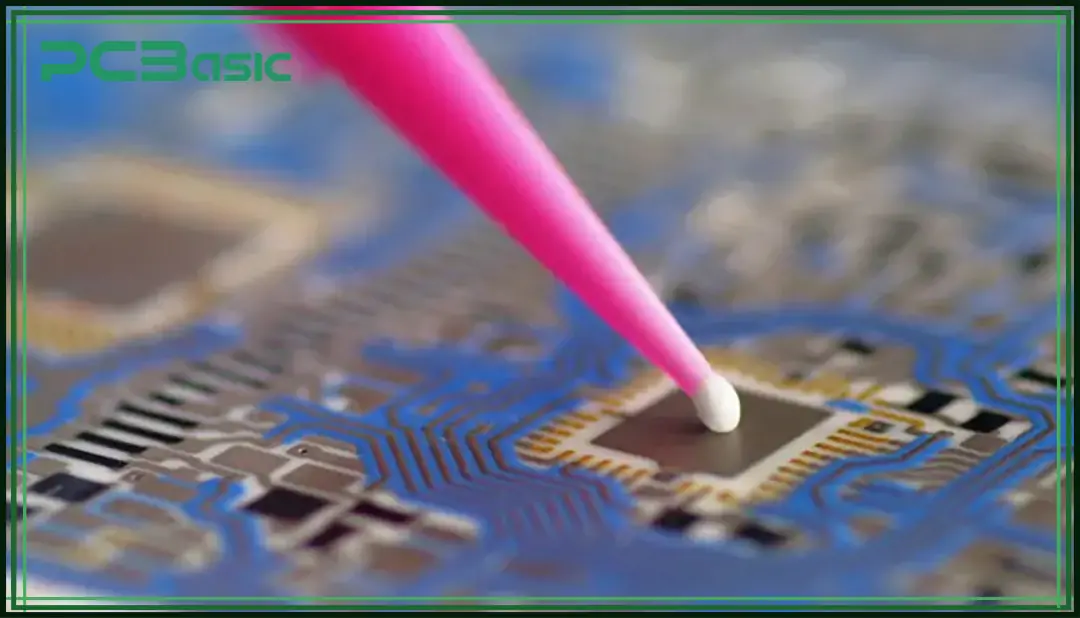
In the electronic manufacturing process, the correct use of PCB glue can not only improve the assembly quality, but also effectively ensure long-term reliability. Below are key guidelines to follow when working with electronic glue.
• Surface preparation:
Before applying PCB glue, thoroughly clean the surface of the circuit board to remove impurities such as dust, oil, and solder residue. If the surface is not clean, it will affect the adhesion of the electronic glue, resulting in bonding failure.
• Use the right amount:
Apply the glue carefully and avoid using excessive amounts. Too much PCB glue may spill into adjacent pads or components, affecting subsequent solder quality, or even causing short circuits or poor thermal conductivity.
• Apply at the right time:
Different types of PCB adhesives have different coating timing requirements. Some need to be used before soldering for pre-fixing components; some need to be reinforced after soldering. Flexible handling according to product design and glue instructions.
• Curing properly:
Each PCB glue has a specific curing method, including r thermal curing, UV curing, or room temperature curing. The curing temperature, time, light intensity and other parameters provided by the manufacturer should be strictly followed to ensure bonding strength and performance.
• Avoid conductive glues unless needed:
Most PCB glues are non-conductive to ensure circuit safety. If the conductive glue is misused, it may cause problems such as short circuits and signal interference. Conductive adhesive should only be used when a conductive connection (such as EMI shielding, grounding) is required.
In summary, proper handling and application of glue for circuit boards is key to achieving strong bonds, stable components, and safe electrical performance. When used correctly, electronic glue can significantly enhance soldering reliability and the overall quality of the product.
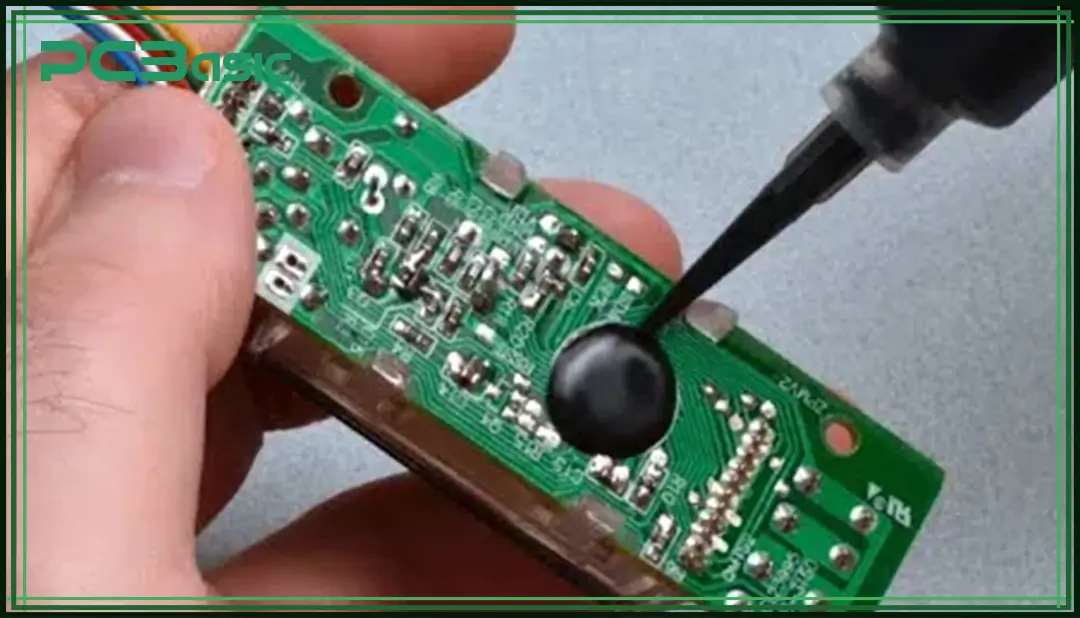
When repairing, replacing components, or performing secondary processing, it may be necessary to remove cured electronic adhesives. However, since circuit board adhesives typically exhibit strong bonding strength and certain chemical or heat resistance properties, extra caution must be taken during removal to avoid damaging the PCB or components. Below are several common and relatively safe removal methods, along with key considerations.
• Use isopropyl alcohol:
For most non-epoxy electronic adhesives (such as acrylic or some silicone types), isopropyl alcohol is a safe and mild solvent. It can be applied by soaking, wiping, or dripping to soften the glue, then removed using tools. Avoid prolonged soaking of multilayer boards or areas with sensitive components.
• Apply gentle heat:
Using a heat gun or temperature-controlled hot plate to apply local heat can soften the glue and make it easier to remove. It is recommended to control the temperature between 50~80°C to avoid damaging the circuit board or nearby components. After heating, use a plastic scraper to gently peel off the glue.
• Use plastic tools:
To prevent scratching or breaking PCB traces, it is recommended to use plastic tweezers, scrapers, or wooden swabs for operation. Although metal tools are sharper, they can easily scratch pads or cut traces, causing irreversible damage.
• Commercial adhesive removers:
There are commercial products developed specifically for PCB adhesive removal. They can effectively soften glue while being compatible with circuit board materials. Be sure to read the product instructions carefully and confirm whether it is suitable for the type of glue used.
Before working on the entire board, it is strongly recommended to test in an inconspicuous area to confirm that it does not corrode the board, dissolve silkscreen, or affect component performance. This step is essential for reducing operational risks.
PCB glue is very important in the assembly process of electronic products. It can not only firmly stick the components to the circuit board, but also play an insulating and shock-proof role, making the device more stable and durable. Choosing the right electronic glue and using it correctly can really play its effect. Whether it is to do prototypes or mass production, the appropriate circuit board glue is an important part of ensuring product quality.
1. Is super glue conductive?
No, standard super glue is not conductive. It's generally safe for use as glue for electronics, but not ideal due to its brittleness.
2. Is Gorilla Glue Conductive?
No, Gorilla Glue is not conducive. However, it expands while curing and may not be ideal as PCB adhesive.
3. What glue is safe for electronics?
Non-conductive PCB glue, such as silicone or epoxy-based adhesives, is safe for electronics.
4. Will super glue damage a circuit board?
Super glue can be too rigid and may crack under thermal stress, potentially causing damage to the circuit board.
5. What is the best adhesive for copper?
For bonding copper, a high-performance epoxy-based PCB adhesive is typically the best choice due to its strong adhesion and electrical insulation.
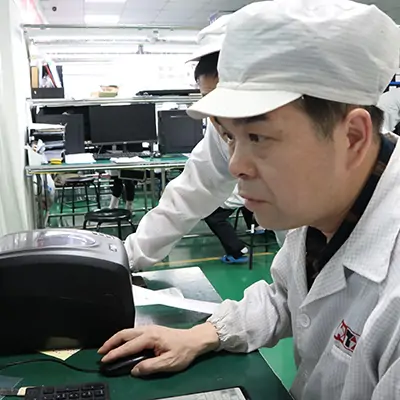
Assembly Enquiry
Instant Quote